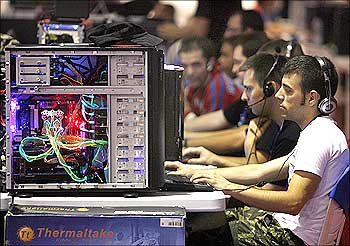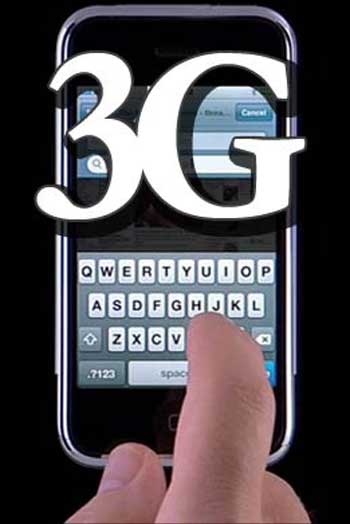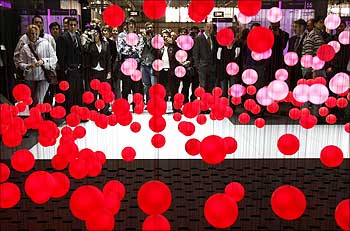
This decade has been one of the most crucial for the technology sector. It was feared that the start of the new millennium would be blighted by computers all over the world blanking out.
Reason: computers were programmed to understand the binary database, which meant they would not recognise 2000. But it proved to be much ado about nothing and everything went well when the clock struck midnight on January 1, 2000.
Instead, now we have a thriving $60 billion (Rs 280,000 crore) Indian outsourcing industry, which got a big boost due to the Y2K problem. The industry registered a growth rate of 40-50 per cent in the first half of the decade.
Both Y2K and the global economic slowdown (that started in 2008) highlighted that technology has moved away from the purview of a select team of IT managers to the core of business.
In terms of technology, 2009 has been a crucial period for India, even as we wait for some of the regulatory hurdles to be cleared such as 3G. It was a year when not only form factors morphed but also boundaries between gadgets blurred. As global warming hit the headlines, IT made its presence felt with Green IT initiatives kicking in. 2009 also saw tech jargon like cloud computing make business sense. Social networking sites impacted consumers and enterprises alike.
2010 will further enhance the usage of some of these technologies, many of which will define the next decade. Business Standard talks about five top technology trends. further. . .

1. Wireless technologies: The wait continues
The wait for 3G continues with batted breath into 2010 as well, with the news coming in that the auction process has been delayed by a month. The auction is likely to happen in February. Meanwhile the reserve price for 3G spectrum has been fixed at Rs 3,500 crore (R 35 billion), while that for WiMax services at Rs 1,750 crore (Rs 17.50 billion).So far, 3G services have already been launched by state-owned Bharat Sanchar Nigam (BSNL) and Mahanagar Telephone Nigam (MTNL), although neither has yet developed a major 3G customer base.
The delay has led to a debate within the industry that operators might just want to skip 3G and wait for 4G. Long Term Evolution (LTE) or 4G seems better equipped to quench the bandwidth and user experience thirst of the emerging breed of wireless applications. Along with 3G, WiMAX (Worldwide Interoperability for Microwave Access) also got delayed. Experts hope that 2010 will be the year when these doubts would be laid to rest.
But despite the delay, with 500 million users the mobile subscriber base continues to grow and the telecom sector is briskly marching towards robust growth in 2010. According to a Morgan Stanley report, mobile internet users are set to outnumber those going online via desktop technology in the next five years.

Carrying multiple gadgets for different purposes is so last decade. Today, a mobile phone can do the work of a computer, a computer can double up as a TV and a TV can be used to play out digital content from a gaming console or videos from a digital camera. In short, every gadget is pumped up to do more than what it is supposed to do.
But the biggest change in 2009 was that, in place of separate devices for information processing (computers), communication (telephones) and audio/visual reproduction (cameras, recorders, TVs and radios), we began using handheld devices that combine all of these functions and dwarf the capabilities of computers.
In the coming year get ready to experience smartphones with built-in projectors, cameras of 12 or more megapixel resolution, more storage memory on devices and a battery back-up of over 16 hours. Players that are positioning themselves as suppliers of converged devices include Samsung, Acer, Toshiba and Asus.
Let's face it - a smartphone can do most of the things you can get from a briefcase full of devices. Convergence will be a consumer reality and thanks to gadget boundaries blurring, 2010 would witness consumers sending emails, uploading photos and videos, and posting status messages anywhere, anytime.

Green IT, until now preached more than practised, will be a keen area of focus. Springboard Research in a recent survey pointed out that fewer than 10 per cent of enterprises in Asia have formally implemented a Green IT strategy.
However, a majority of enterprises including IT majors - TCS, Infosys, Wipro - have taken steps to implement Green IT at their end. Wipro, for instance, is planning to reduce its carbon footprint from the present 3.96 tonnes per employee to 2.5 tonnes in the next five to seven years. Global firms like IBM, Cisco and HP have already initiated steps to reduce their carbon footprint.
Analysts also say that the initial uptake for Green IT would be from a cost efficiency point. The study's findings also indicate that the market also needs aggressive education as nearly 15 per cent of respondents claimed that they did not know how or where to begin with regard to Green IT.

Cloud Computing, saw some good on-ground activity from many IT players and hence continued to be a buzz-word during 2009. Recession just gave it the desired push, with cost-saving features as the biggest agenda on CIOs' lists.
Over the next five years, IDC expects spending on IT cloud services to grow almost threefold, reaching $42 billion by 2012. Spending on cloud computing will accelerate throughout the forecast period, capturing 25 per cent of IT spending growth in 2012.
Some of the concepts of cloud computing that saw momentum in terms of adoption in India were software-as-a-services (SaaS), Platform-as-a-services (PaaS) and infrastructure-as-a-service (IaaS).
Adoption among enterprises is still very low. But clearly a few IT services players are pegging this as the best approach to cater to small and medium enterprises (SME). TCS, which announced its foray into the SME segment with ITaaS over a year ago, has close to 60 customers. Bangalore-based Wipro has clearly chosen this route to increase its footprint among SMEs.
Meanwhile there are many IT firms that have started to implement cloud-based infrastructure for their internal requirements. Patni Computer Systems plans to have all its internal IT services hosted on the internet, with many B2C players by June 2010. This in turn will make the company save 30 per cent by way of capital expenditure and 30 per cent on space.
But as Diptarup Chakraborti, principal analyst research at Gartner says, while cloud computing has the potential to change the landscape of IT outsourcing business, there still is a good amount of ambiguity surrounding this concept.

5. Social networking: Tweet your company status
Blame the recession or the need to cut costs, but Indian companies are latching on to social media to engage with end-users and clients. Social networking sites like Twitter, Facebook and YouTube are no longer just the purview of GenX. 2009 saw baby steps being taken in the adoption of these sites by companies.2010 could see the increased use of these sites for branding and marketing. The two joint CEOs of Wipro Technologies, Girish Paranjpe and Suresh Vaswani, are expected to become active on Twitter. S Ramadorai, vice-chairman of TCS, is already on Facebook, and a majority of IT firms including MindTree are on the professional networking site Linkedin.
This despite the fact that, as per a recent Assocham survey, social networking sites cause 12.5 per cent loss of employee productivity in the corporate sector.
Apart from FMCG firms, those that traditionally focused on business-to-business (B2B) tools are also using business-to-consumer (B2C) tools like networking sites to gain attention.
An instance is the IT sector. IT companies are not new to the virtual world, having made their presence felt on secondlife.com - a three-dimensional virtual world where registered users socialise and connect with one another. Firms like Infosys, Wipro and others are using these sites for brand promotion and also for marketing and sales.